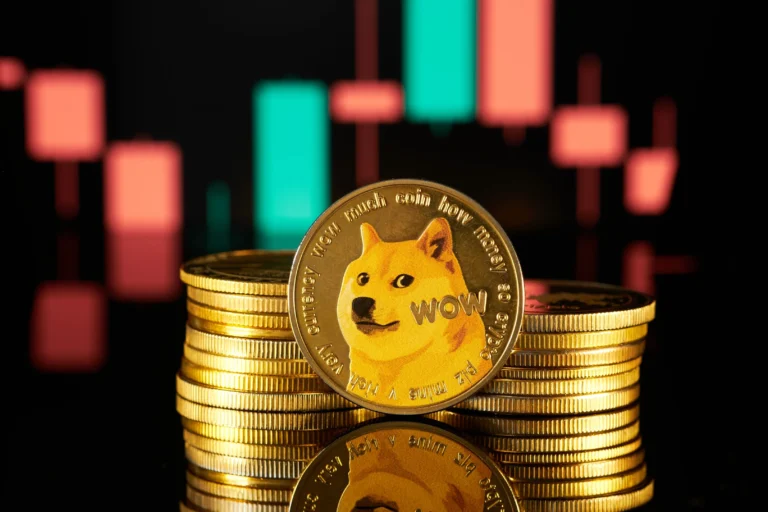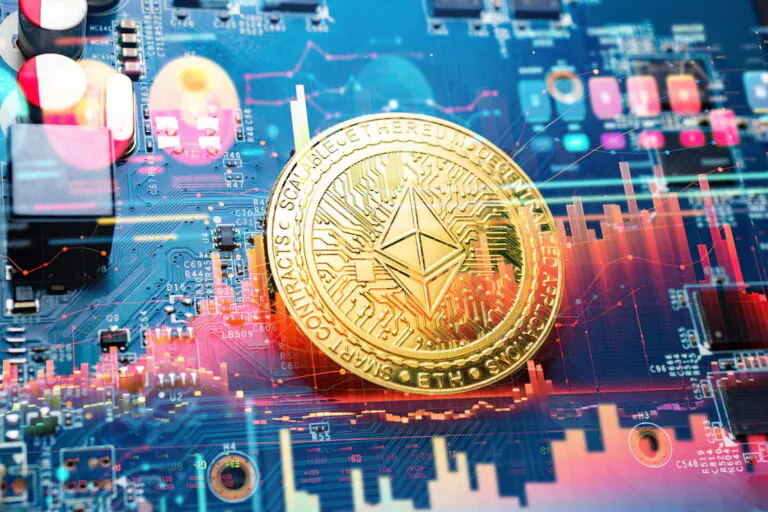Dogecoin (DOGE) with the image of a Shiba Inu dog called Kabosu as its logo, is one of the most popular and successful memecoins. It is considered an altcoin and was launched in December 2013.

Who are whales and hamsters on the cryptocurrency market?
Who are whales?
Cryptowhale a term used to describe an investor who has accumulated enough money for his withdrawal to have a material effect on the market price of an asset. In the case of bitcoin, these are owners who have at least 10,000 BTC.
The term “whale” was originally chosen for a reason. As soon as the whale appears on the surface of the water, and then goes under the water, it creates a wave that covers everything that is nearby. Likewise, crypto whales can cause a reaction when crypto enters the market or starts moving out of their wallets. This can cause discussions in the media, on forums, and in some cases even lead to price changes for a particular crypto.
In October 2014, the world’s first Bitcoin whale was found, which has a significant impact on the price of the main cryptocurrency. At that time, the cost of Bitcoin was approximately $370, and the market was in a downtrend. After some time, the price of the first crypto fell to $325 and it was expected that it would remain at about this level. However, unexpectedly, an anonymous person put up for sale 30,000 Bitcoins at a rate of $300. As a result, this order was instantly bought, and the cost of BTC dropped to $275 in just a day. It turned out that the anonymous trader was a Reddit user known by the pseudonym BearWhale. According to him, he needed urgent money, so he decided to sell 30,000 bitcoins, not intending to deliberately depreciate cryptocurrencies.
How do cryptocurrency whales affect the market?
Cryptocurrency whales, also known as crypto whales, can have a significant impact on the cryptocurrency market. They have sufficient resources and asset volumes to influence the price and liquidity of certain cryptocurrencies.
The impact of crypto whales on the market can manifest itself as follows:
- Price impact. When crypto whales decide to sell or buy a large amount of cryptocurrency, this can cause a significant price change on the market. A massive sale of cryptocurrencies by a cryptowhale can cause the price to go down, while their large purchases can cause the price to go up.
- Volatility. When crypto whales are actively involved in high-volume trading, this can increase market volatility. Their actions can encourage other traders and investors to react to price changes and change their strategies.
- Psychological impact. Cryptowhales often attract the attention of the cryptocurrency community and the media. Their actions and decisions can cause discussion, speculation and emotional reactions from other market participants. This can affect the sentiments and decisions of other traders and investors.
- Create a trend. When crypto whales make significant moves or transactions in the market, it can attract the attention of other participants and create a new trend. Such actions may inspire other investors to imitate or act in the opposite direction, which may lead to further price movements.
It is important to note that the impact of crypto whales on the market is not always predictable and may be associated with a high degree of risk. Traders and investors should be aware of the activities of crypto whales and take them into account in their strategies and decisions.
What Strategies Do Cryptowhales Use?
Crypto whales, as major players on the cryptocurrency market, can apply various strategies in their actions. Here are some of them:
- Accumulation. Cryptowhales can use an accumulation strategy where they gradually buy large amounts of cryptocurrencies at the current market price. They can plan long-term investments, counting on the price increase in the future.
- Distribution. Cryptowhales can use a distribution strategy where they gradually sell their cryptocurrency assets on the market at the current price. This can be done to fix profits or to rebalance portfolio.
- Price manipulation. In some cases, crypto whales may try to manipulate the price of a cryptocurrency by making large purchases or sales. They can create artificial price changes in order to attract other traders and investors and influence the market to their advantage.
- Arbitration. Cryptowhales can use an arbitrage strategy where they simultaneously buy and sell the same cryptocurrency on different exchanges or markets in order to profit from price differences. This can be done through the fast execution of trades and the use of trading robots or algorithms.
- Management of risks. Cryptowhales usually have a lot of experience and resources to manage risks on the cryptocurrency market. They may apply various risk management strategies such as portfolio diversification, use of protective orders (stop losses) and derivative instruments.
It is important to note that not all cryptowhales have the same goals and strategies. Each cryptowhale may have its own approach to trading and investing, depending on its goals.
How can an ordinary investor live among the whales?
The life of an ordinary investor among crypto whales on the crypto market can be challenging and require special approaches. Here are some suggestions that might help:
- Explore and educate. When working on the crypto market, it is important to have a good understanding of cryptocurrencies and the market. Conduct research, study projects and technologies to make informed decisions. Education and understanding will help you make informed decisions and reduce risks.
- Develop a strategy. Define your goals and develop an investment strategy. Determine your level of risk and decide which tools and approaches you will use. A strategy will help you stay focused and avoid making emotional decisions related to market fluctuations.
- Diversify your portfolio. Diversity is a key element of risk management. Do not put all your funds on one cryptocurrency or project. Spread your investments across different assets and sectors to reduce the impact of individual market movements.
- Follow the news and trends. Stay up to date with the latest news and trends in the crypto world. Keep a close eye on trading volumes, major trades, and news that may affect the market. This will help you make more informed decisions and adapt to changing situations.
- Manage emotions. The crypto market can be extremely volatile, which can cause emotional reactions in investors. Try to keep cool and avoid emotional decisions. Rely on facts and your strategy, not on instantaneous market fluctuations.
Who are hamsters?
In the context of the crypto market, the term “hamsters” is used to refer to investors who hold small amounts of cryptocurrencies and often exhibit panic reactions to price fluctuations. Hamsters tend to make emotional decisions, such as selling assets in bulk when prices go down, or buying during price spikes out of fear of missing out on an opportunity to make money. Their decisions may be based on hearsay, chat discussions, or advice from other investors rather than fundamental or technical analysis. Often hamsters do not have a strategy or long term plan and their decisions can be unpredictable and unsound in terms of market fundamentals. The term “hamster” is used somewhat negatively and reflects unconscious behavior on the market.
That is, a hamster is an inexperienced trader who does not yet understand trading, wants to make big profits, but makes stupid mistakes.
What is the difference between a hamster and a competent investor on the crypto market?
- Rationality and based on analysis. A competent investor makes decisions based on fundamental and technical analysis, studying market trends, data and information. It takes into account factors such as financial performance, news, technological developments, and other influencing factors. The hamster, on the other hand, tends to make emotional decisions, reacting to short-term price fluctuations, rumors, and advice from other investors.
- Long term strategy. A competent investor has a long-term strategy, defined goals and an action plan. He can diversify his investments, consider risk and potential return. The hamster, on the other hand, often exhibits short-term thinking, seeking to make quick profits or avoid losses, without a clear understanding of their goals and risks.
- Education and awareness. A competent investor constantly updates his knowledge about cryptocurrencies, the market and investment strategies. He owns information, studies and analyzes news, research and trends. The hamster often does not have sufficient education and awareness, relying on random sources of information or noise around the market.
- Management of risks. A competent investor is aware of the risks and takes measures to manage them. He uses diversification strategies, sets stop losses and has an understanding of his comfort level with risk. The hamster, on the other hand, often does not consider risks and makes decisions based on emotions, which can lead to large losses.
Hamsters and scammers
Hamsters and scammers on the crypto market are different categories of market participants with different intentions and behavior.
Fraudsters use a variety of fraudulent schemes, including such as “Pump and Dump” (pump and dump), in which the price of an asset is artificially increased in order to sell it to inexperienced investors. This scheme is found in both the stock market and the crypto market, and it is especially common in the field of cryptocurrencies. Many investors, who do not have sufficient knowledge and experience in the field of cryptocurrencies (the same hamsters), are subject to manipulation by scammers. They may be attracted to the idea of getting rich quick by looking at examples of the rise in the price of cryptocurrencies in the past and hoping to repeat this success.
Fraudsters usually choose cheap cryptocurrencies with low trading volumes for pumping. They acquire assets in a small amount to avoid suspicion, and then actively promote them through advertising on various platforms, blogs and forums. Fraudsters can create the illusion of interest in an asset, for example, by providing insider information about an upcoming price increase or indicating the exact time and place to buy cryptocurrency. They can also use bots to manipulate trades.
Traders come and see an increase in the price of an asset and participate in trading, which further stimulates the price increase. At the peak of growth, scammers start selling their assets, causing panic among traders who start selling their assets en masse, which leads to a sharp drop in the price. The scammers then buy the assets again at a low price and repeat the scheme several times.
Thus, fraudsters use manipulation and panic among inexperienced market participants (hamsters) so that they acquire an asset at a higher cost and sell it at a lower one.
Tips for the Security of Your Own Assets
Experienced traders are of the opinion that every new investor goes through a hamster stage where he makes mistakes and learns from them. However, to protect your money and assets, you can take the following precautions:
- Complete the initial course. If you want to learn on your own, then first learn the basics of trading and use trader's crypto dictionary on our website. We update it regularly, so it is suitable for both beginners and experienced investors.
- Do not succumb to mass panic. Control yourself and don't let your emotions influence your decision making. Do not panic when the prices of your assets plummet, or make spontaneous investments, chasing fashion trends. Skillful traders know that panic and thoughtlessness are the main dangers for investors.
- Pre-purchase asset analysis. When investing in a company or a crypto project, it is important to do an analysis first. Study the history of the company, look at price charts and data for the previous period. Multipliers can be useful tools for analysis.
- Diversify your crypto portfolio. Don't invest all your money in one asset or industry. It is advisable to break down your portfolio at least once a year. This will help reduce risks and protect your investment from potential losses.
By following these recommendations, you will be able to increase your financial security and reduce possible risks on the crypto market.
Start your crypto exchange with Coin24

Exchange BTC, ETH, USDT and more — cash or card

Secure and fast crypto exchange since 2018



